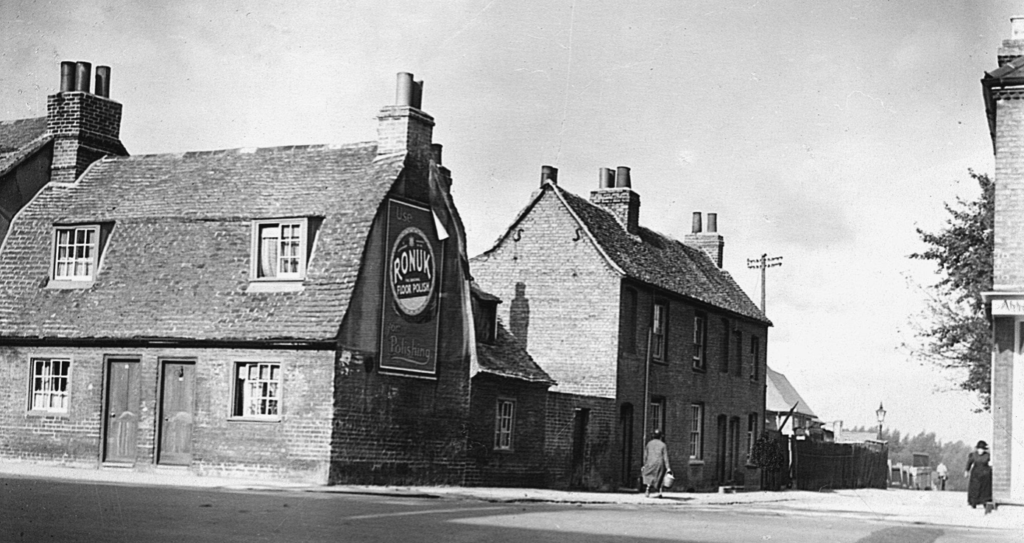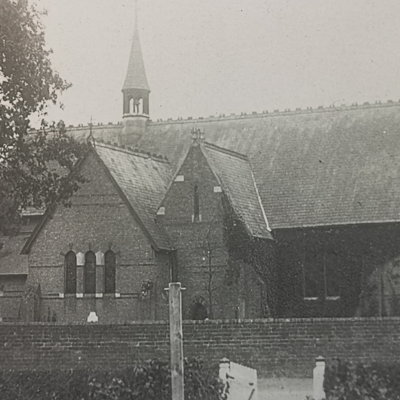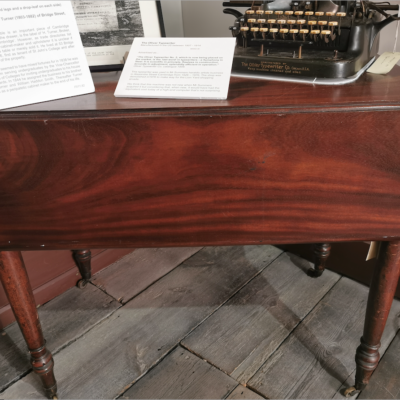Search by topic
- archaeology
- Building of Local Interest
- chapel
- charity
- church
- crime
- dressmaker
- fire
- Great Eastern Railway
- Listed building
- Mapping Relief
- medieval
- oral history
- poverty
- Public House
- Religious House
- Roman
- scholar
- school
- Then and Now
- tudor
- women
- work
- world war one
- world war two
Search by text
 101 Newmarket Road & Walnut Tree Avenue from Newmarket Road 1929 (photo J S Moore)(Cambridgeshire Collection)
101 Newmarket Road & Walnut Tree Avenue from Newmarket Road 1929 (photo J S Moore)(Cambridgeshire Collection)The Cambridge Female Refuge Project
The Cambridge Female Refuge minute book transcription
Voices from the Cambridge Female Refuge
This is a project managed by Dr Susan Woodall of the Open University to make available digital images of the records of the Cambridge Female Refuge, held by Cambridgeshire Archives in Ely.
The Capturing Cambridge entry about the building in Christ Church Street can be found here:
The opening page of the Cambridge Female Refuge Minute Book dating from 1838 sets out the purpose of the institution as follows:
The object of this Institution is to afford to Females who have been leading a sinful course of life, and express a desire of returning to the path of virtue, a temporary refuge, where they may be sheltered from temptation, be provided with proper employment, and receive religious and useful instruction, until an opportunity occur for restoring them to their friends, transferring them to a Penitentiary [a larger institution with the same purpose], or placing them in some situation where they may procure for themselves an honest livelihood.
The Cambridge Female Refuge began life in 1838 in temporary premises at Dover Cottage on East Road. Later moving to a purpose-built permanent home behind the new Christchurch on what is now Newmarket Road, it was one of hundreds of institutions established in England from the late eighteenth into the nineteenth and twentieth centuries. Set up by voluntary action, their mission was to re-moralise ‘fallen women’, that is, women who were sexually experienced but unmarried. To respectable society, such women represented a moral threat. One remedy was to redirect their life courses by persuading them to enter institutions like the Cambridge Female Refuge, where they would do commercial laundry and sewing work for their upkeep, receive religious instruction in church and institutional ‘family’ prayers. The time spent in this process varied, but at the Cambridge Female Refuge, the expectation was two years. After that period, women were placed in respectable domestic service by the institution. The Cambridge Female Refuge was managed by a committee, largely composed of Cambridge-based Anglican clergymen, some of whom were connected with the University. The institution’s founder was the Reverend James Scholefield, Regius Professor of Greek in the University and pupil of Reverend Charles Simeon. Scholefield chaired the Managing Committee which was responsible for institutional finances, building maintenance and staff. Women applying to the Refuge had to present themselves in person at specific times in the week. They would then be interviewed by members of the Managing Committee and asked to give an account of their lives to date and indicate why they wished to enter the institution.
The Transcriptions
In transcribing the statements inmates made at their admission interviews, as far as possible the original spellings have been kept, with punctuation exactly as it appears in the Minute Books. Minutes might have been taken by a member of the Managing Committee or a trusted scribe known to them. Changes in handwriting indicate different notetakers. Spelling is also variable in places.
Abbreviations: In order to keep up with prompts and questions from the committee and answers proffered by women applicants, notetakers abbreviated familiar words, for example Thursday could be Thurdy Sun Street could be Sunst and so on. The voices you will hear are those of the women themselves, sometimes those of family members or friends accompanying them and of the managing committee.
Applicants’ statements
What were the Committee members looking for? First, practical information on living family members, their addresses (where known) and their occupations. Some of the women applying brought family members with them for moral support or because those family members insisted on coming to see the premises and/or to complain about their unruly daughters, which had brought them to the institution’s door. Given the moral purpose of the institution as set out above, most significant for the Managing Committee interviewing were the sexual histories which applicants were required to state. From these and from discussions with applicants’ family members who often accompanied their relatives, the Committee assessed the degree of genuine remorse or regret which applicants exhibited for their ‘unchaste’ unmarried state. The committee checked applicants’ willingness to abide by the rules of the institution and looked for a genuine commitment to changing their life courses through practical training in laundry work for respectable domestic service.
Why do the inmates’ voices matter? Because they give us an insight into the experiences of poor women in Cambridge, mostly from the working classes and the choices they made in order to survive.
Cambridge Female Refuge Minutes 1838-1842
Notes on individual entries for 1838-1842
Cambridge Female Refuge Minutes 1842-1853
Contribute
Do you have any information about the people or places in this article? If so, then please let us know using the Contact page or by emailing capturingcambridge@
License
This work is licensed under CC BY-NC-SA 4.0








